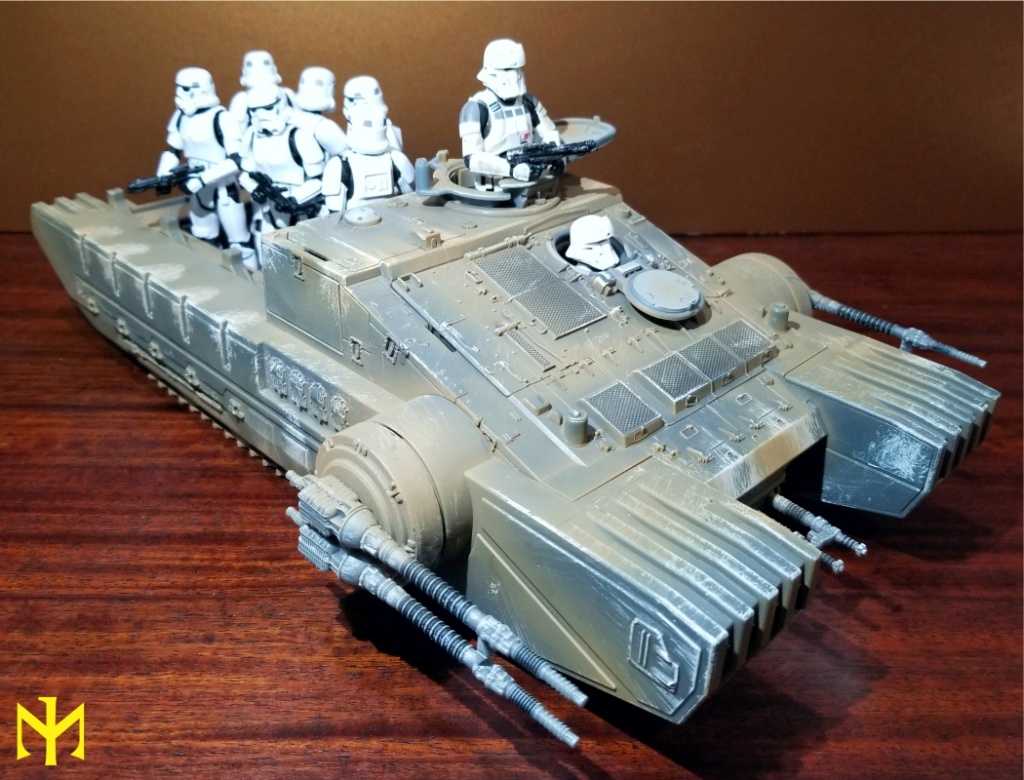
The AT-ACT is more than capable of engaging enemy forces, as the Rebel commandos learn in Rogue One, but the AT-ACTs stationed at Scarif are there for utility, not defense. Since the AT-ACT isn’t officially designated as a combat vehicle, most Imperial personnel are qualified to operate the walker. Designed to transport construction materials, tactical equipment, and other heavy cargoes, the AT-ACT has slightly longer legs than the AT-AT, giving it greater speed, and favors storage space over heavy armor. Not to be confused with its more heavily armored sibling, the All Terrain Armored Transport (AT-AT), the All Terrain Armored Cargo Transport is not the battlefield behemoth many fans remember from the Battle of Hoth in the Empire Strikes Back. Also, the Delta-class has an additional forward cannon in lieu of the rear cannon of the Lambda-class, making the Delta more suited for direct engagement, when necessary.


Its hull shape, surface texture, and engine are all configured to maximize stealth operations, allowing Krennic to move to and from secret build sites unnoticed. What the T-3C lacks in amenities, it makes up for in function. In fact, Sienar originally never even intended to put the Delta-class into production, but Krennic’s appreciation for the design convinced them to move forward.įunctionally the Delta-class is far more sparse than the Lambda, but since Krennic’s shuttle, designated T-3C (with no alternate call sign), is mainly used to transport Krennic and his elite Death Troopers, creature comforts aren’t a top priority. While most Imperials prefer Sienar Fleet Systems’s Lambda-class, Orson Krennic appreciation for unique design had him stick with the Delta-class shuttle long after it had been replaced by the newer Lambda-class (which we'll cover later).


 0 kommentar(er)
0 kommentar(er)
